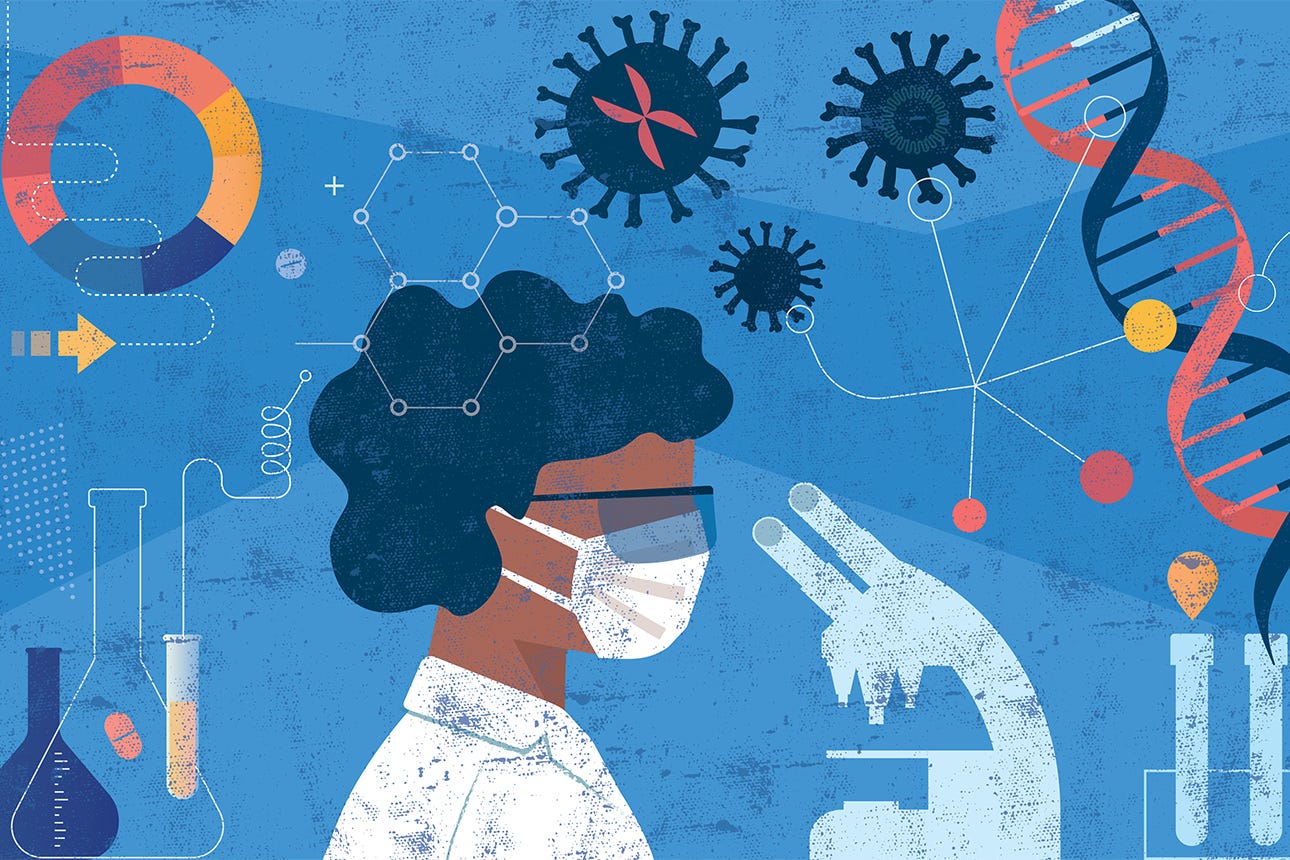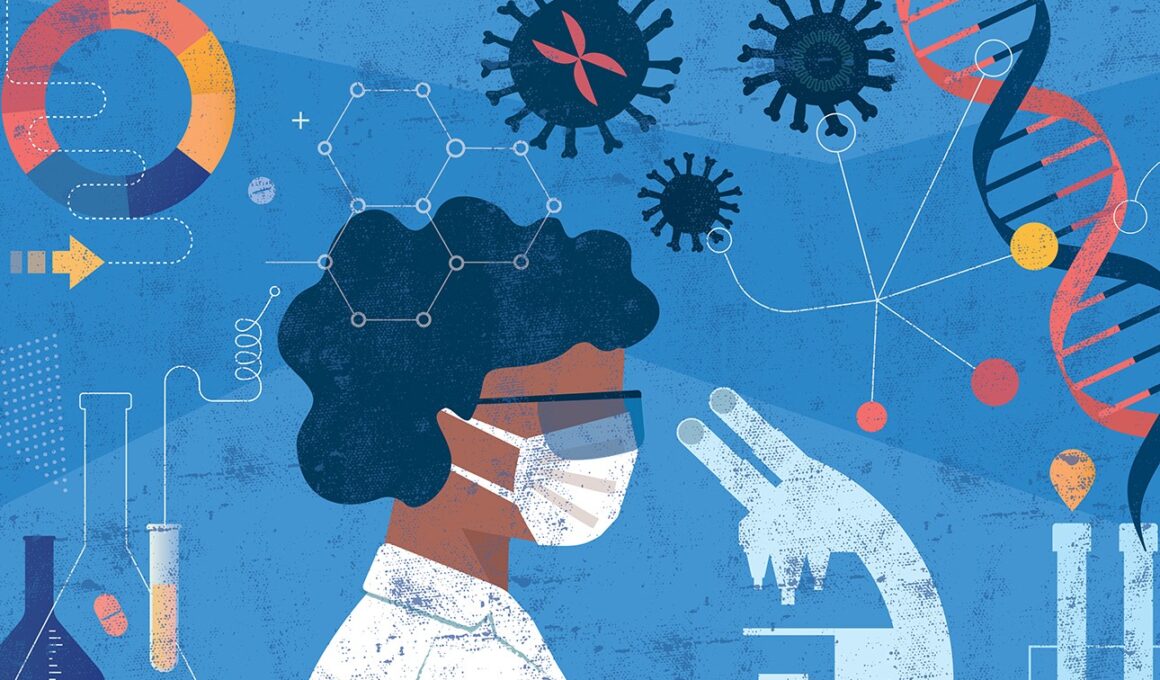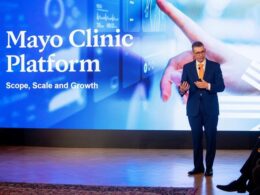MIT Sloan Management Review
Thomas C. Davenport and Randy Bean
August 08, 2022
Executive Summary by:
Joaquim Cardoso MSc.
The Health Transformation — institute for research and strategy
Digital Health Unit
August 9, 2022
What is going on?
- Most of the advances currently made by clinical AI are coming from innovative health care institutions.
- One prominent example is Mayo Clinic, a hospital and research center that was founded in Rochester, Minnesota, more than 150 years ago.
- In our experience, there is no health care provider organization doing more with AI than Mayo Clinic.
What are the use cases?
- AI is being explored in a variety of areas there, including the kinds of
administrative use cases we mentioned in our previous column (including patient scheduling, prior authorization with payers, and revenue cycle applications). - But it’s also being developed for clinical uses such as
– specialty-specific applications in radiology and cardiology,
– remote diagnostics and management based on health care sensor data, and
– matching patients with clinical trials.
These AI initiatives are part of a major move toward digitization.
- In 2020, Mayo Clinic appointed a chief digital officer to lead its enterprisewide digital strategy and formed the Center for Digital Health (CDH).
- As Mayo Clinic’s hub for digital transformation, CDH is using data, analytics, machine learning, and AI to help improve patient health and deliver monitoring, diagnosis, and treatment recommendations through digital channels to patients around the world.
Structure of the publication
- Introduction
- Leading AI Innovation at Mayo Clinic
- Speeding Up Model Development and Commercialization

In a previous AI in Action column, we argued that in the world of health care, administrative applications of artificial intelligence were the low-hanging fruit.
Sometimes, however, it is reasonable to reach for higher branches of the tree, and clinical applications of AI fall into that category.
We expect that someday many important diagnosis and treatment decisions will be made or augmented by AI applications.
Today we are in the early stages of achieving that objective.
Most of the advances currently made by clinical AI are coming from innovative health care institutions.
One prominent example is Mayo Clinic, a hospital and research center that was founded in Rochester, Minnesota, more than 150 years ago.
It is consistently listed in U.S. News & World Report’s ranking of top hospitals and excels in a variety of specialty areas.
At any given time, it has approximately 12,000 research studies underway.
In our experience, there is no health care provider organization doing more with AI than Mayo Clinic.
In our experience, there is no health care provider organization doing more with AI than Mayo Clinic.
AI is being explored in a variety of areas there, including the kinds of administrative use cases we mentioned in our previous column (including patient scheduling, prior authorization with payers, and revenue cycle applications).
But it’s also being developed for clinical uses such as specialty-specific applications in radiology and cardiology, remote diagnostics and management based on health care sensor data, and matching patients with clinical trials.
These AI initiatives are part of a major move toward digitization.
In 2020, Mayo Clinic appointed a chief digital officer to lead its enterprisewide digital strategy and formed the Center for Digital Health (CDH).
As Mayo Clinic’s hub for digital transformation, CDH is using data, analytics, machine learning, and AI to help improve patient health and deliver monitoring, diagnosis, and treatment recommendations through digital channels to patients around the world.
As Mayo Clinic’s hub for digital transformation, CDH is using data, analytics, machine learning, and AI to help improve patient health and deliver monitoring, diagnosis, and treatment recommendations through digital channels to patients around the world.

Leading AI Innovation at Mayo Clinic
Dr. Bhavik Patel is a diagnostic radiologist and the director of the Mayo Clinic’s Arizona branch, and the leader of AI innovation and enablement at Mayo Clinic overall.
Many of the early advances in AI, particularly those in computer vision, have been in medical imaging, so it’s not surprising that someone with radiology expertise is helping to pave the way for many of the organization’s AI efforts.
Some of his own research, for example, addresses how AI can help to create and enhance the quality of images for radiologists to read.
In an interview, Patel described those efforts as “performing clinical trials with AI to work toward clinical implementation” — in other words, disciplined experimentation.
Patel said that in radiology, deep learning models are quite capable of image recognition if they’re fed enough quality training data.
However, he noted that the currently available AI systems — both those from vendors and those developed internally — are still narrow in scope (that is, radiology- or cardiology-specific).
Efforts are underway, he said, to develop multimodal AI models that affect multiple specialties and therefore impact a broader range of patient care.
In an interview, Patel described those efforts as “performing clinical trials with AI to work toward clinical implementation” — in other words, disciplined experimentation.
Efforts are underway, he said, to develop multimodal AI models that affect multiple specialties and therefore impact a broader range of patient care.
Patel said he sees his primary role as focusing on when and where AI and machine learning are needed and on the best pathways from research to implementation.
He said that at the moment, he believes many machine learning models are brittle and might not generalize beyond the research lab.
Extensive validation and testing are required to ensure safe and responsible AI solutions for patient care.
Patel said he sees his primary role as focusing on when and where AI and machine learning are needed and on the best pathways from research to implementation.
Before any AI model goes into clinical deployment, Mayo Clinic and similar providers need to establish who will govern and lead its use, what the best practices are, what the scope of the model is, what the model’s biases are, and when to trust the model.
Mayo Clinic currently has a few models in daily clinical use, including one that analyzes electrocardiogram data.
Patel noted that they are not focused on autonomous image analysis and diagnosis yet; he believes that AI will assist human radiologists and other providers for the foreseeable future.
Patel said he sees his primary role as focusing on when and where AI and machine learning are needed and on the best pathways from research to implementation.
Patel noted that they are not focused on autonomous image analysis and diagnosis yet; he believes that AI will assist human radiologists and other providers for the foreseeable future.

Speeding Up Model Development and Commercialization
Mayo Clinic is focused on how to generate AI use cases more rapidly with standardization of software, development processes, and technology.
It aims to produce machine learning models quickly with a so-called AI factory approach it launched in 2021.
Over 200 use cases have already been part of the process, which it refers to as a “discovery-translation-application research continuum.”
Mayo Clinic also collaborates closely with Google on AI, including its use of Google Cloud Platform, and has a few joint initiatives with Google Health, a unit that partners with health care provider organizations to conduct R&D and create solutions.
Mayo Clinic is focused on how to generate AI use cases more rapidly with standardization of software, development processes, and technology. …Over 200 use cases have already been part of the process (the AI factory approach)
Mayo Clinic has specific programs that support AI for the three domains of practice, research, and education.
Its Mayo Clinic Platform, headed by longtime Boston hospital tech executive Dr. John Halamka, serves as its connector of external digital health producers and consumers, enabling diffusion of the organization’s knowledge on a large scale.
This powerful innovation and technology platform orchestrates an ecosystem of partners, including a portfolio of startups using AI and other Mayo Clinic resources.
A program for startups called Platform_Accelerate, new in 2022, provides de-identified training data sets, model validation frameworks, clinical workflow planning, and expert mentorship from Mayo Clinic in exchange for equity positions.
The first four entrants into the competitive 20-week accelerator were AI companies.
Mayo Clinic has also spun out several startups to commercialize its own AI research.
This powerful innovation and technology platform orchestrates an ecosystem of partners, including a portfolio of startups using AI and other Mayo Clinic resources.
It’s clear from our conversations and research that AI use at Mayo Clinic is exploding, but that growth comes with challenges.
Patel offered this perspective:
- “There are so many ongoing activities. How do we create governance of them without becoming a bottleneck?
- Some specialties, like radiology and cardiology, are relatively mature. For them, we ask what they need to continue on their paths.
- Then we try to help less mature specialties on the AI pathways to help them launch their AI initiatives and leverage the lessons from the AI-mature specialties while maintaining their core identities.”
The key question, he said, is how Mayo Clinic can continue to support innovative efforts while providing frameworks for the creation of fair and explainable clinical AI models.
Fortunately, Mayo Clinic has long had a collaborative culture, and there is an openness to sharing early learning across the organization.
It’s still too early to say how AI will reshape health care but perhaps not too early to predict that Mayo Clinic will play an important role in the transformation.
It’s still too early to say how AI will reshape health care but perhaps not too early to predict that Mayo Clinic will play an important role in the transformation.
About the Authors
Thomas H. Davenport (@tdav) is the President’s Distinguished Professor of Information Technology and Management at Babson College, a visiting professor at Oxford’s Saïd Business School, and a fellow of the MIT Initiative on the Digital Economy.
Randy Bean (@randybeannvp) is an industry thought leader, author, and CEO of NewVantage Partners, a strategic advisory and management consulting firm that he founded in 2001. He is the author of Fail Fast, Learn Faster: Lessons in Data-Driven Leadership in an Age of Disruption, Big Data, and AI (Wiley, 2021).
NAMES MENTIONED
Dr. Bhavik Patel is a diagnostic radiologist and the director of the Mayo Clinic’s Arizona branch, and the leader of AI innovation and enablement at Mayo Clinic overall.
Its Mayo Clinic Platform, headed by longtime Boston hospital tech executive Dr. John Halamka,
Originally published at https://sloanreview.mit.edu on August 8, 2022.












